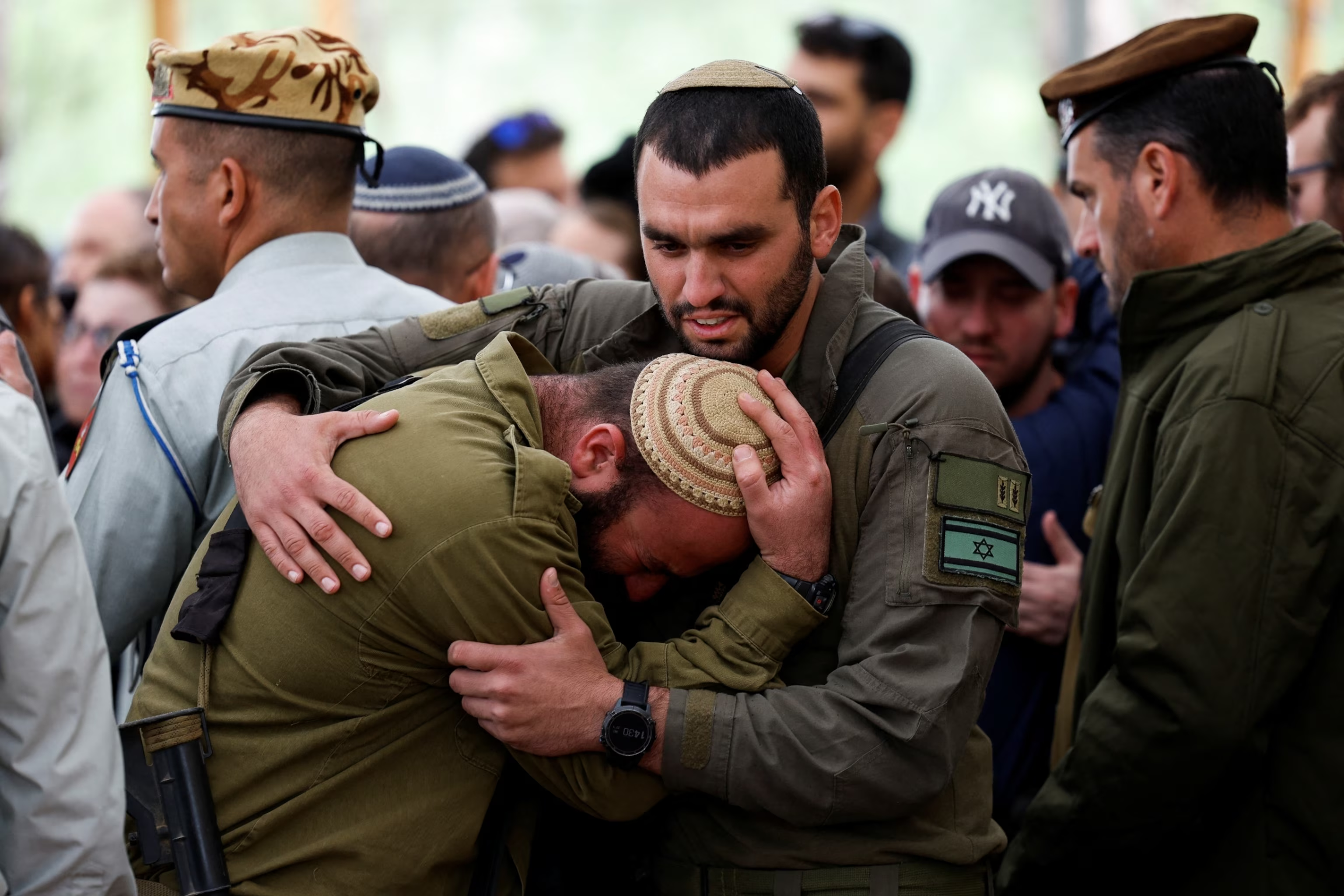In a significant development, the Israel Defense Forces (IDF) and Shin Bet have successfully targeted Hamas Aerial Chief Behind Paraglider Infiltration in Israel and eliminated Samer Abu Daqqa, the head of Hamas’s aerial operations.
Abu Daqqa was a pivotal figure behind the October 7 terrorist attacks in Israel, which included the use of paragliders and drones to infiltrate Israeli territory. His elimination marks a critical moment in Israel’s ongoing efforts to neutralize key figures within Hamas’s leadership and aerial capabilities.
Hamas Aerial Chief Behind Paraglider Infiltration : Samer Abu Daqqa
Samer Abu Daqqa had been a major force in the development and execution of Hamas’s aerial strategies, focusing on using drones and paragliders as tools of terror.
Before assuming his role as the head of Hamas’s aerial operations, Abu Daqqa played a crucial part in building Hamas’s drone and unmanned aerial vehicle (UAV) programs. He served as the head of UAV operations until Operation Guardian of the Walls in May 2021, where Hamas used UAVs to attack Israeli military targets.
Following the death of his predecessor in October 2023, Abu Daqqa was appointed to lead Hamas’s aerial division, further expanding the organization’s ability to carry out aerial terror attacks.
Read : Israel Bombed Over 40,000 Hamas Targets in Gaza in One Year of War
His work in weapons manufacturing and production units was instrumental in advancing Hamas’s capacity to conduct attacks from the sky.
Read : Mohammed Deif: Hamas Leader and Mastermind of October 7 Attack on Israel’s Ben Gurion University
Under his leadership, Hamas orchestrated the deadly paraglider infiltrations that occurred on October 7, one of the deadliest attacks on Israeli territory in recent years.
Abu Daqqa’s elimination by the IDF and Shin Bet is seen as a significant blow to Hamas’s operational capabilities. His role in developing and executing aerial attacks, as well as overseeing the production of UAVs and other weapons, made him a high-priority target for Israeli forces.
The October 7 Terrorist Attack and Hamas’s Aerial Capabilities
The October 7 attack marked a devastating chapter in the ongoing conflict between Israel and Hamas. Under the cover of heavy rocket fire, Hamas terrorists infiltrated Israeli territory using a combination of paragliders and drones, as well as other ground operations.
The attack targeted several Israeli towns, cities, and military installations along the Gaza border, resulting in the deaths of over 1,200 people. The infiltration extended as far as Ofakim, a city located deep in the Negev Desert, showcasing Hamas’s growing ability to strike beyond its usual reach.
Samer Abu Daqqa played a critical role in planning and executing these aerial infiltrations. The use of paragliders in particular was a unique tactic that took Israeli defenses by surprise.

These lightweight aircraft allowed Hamas operatives to cross into Israeli territory undetected, evading traditional radar systems and border defenses. Alongside the paraglider attacks, Abu Daqqa also oversaw the deployment of drones to target Israeli soldiers and civilians, adding to the devastation of the October 7 massacre.
The attack underscored Hamas’s increasing reliance on aerial capabilities to conduct large-scale terror operations. By using drones, UAVs, and paragliders, Hamas has developed new methods of infiltrating Israeli airspace, complicating the IDF’s defense strategies.
The IDF’s successful operation to eliminate Abu Daqqa demonstrates Israel’s commitment to countering these aerial threats and preventing future attacks on its civilians.
Implications of Abu Daqqa’s Elimination for Hamas and Israel
The death of Samer Abu Daqqa represents a major setback for Hamas, particularly in its aerial operations. Abu Daqqa was instrumental in enhancing Hamas’s technological capabilities and orchestrating deadly attacks against Israel.
His leadership and expertise in UAV operations and aerial weapons production made him a critical figure in Hamas’s strategy to destabilize the region through terror from the air.
With Abu Daqqa now eliminated, Hamas faces a significant leadership vacuum in its aerial division. It remains to be seen who will take his place, but his death is likely to disrupt Hamas’s ability to plan and execute similar aerial attacks in the near future.
However, Hamas has shown resilience in the past, quickly filling leadership roles and continuing its operations despite the loss of key figures.
For Israel, the elimination of Abu Daqqa is a victory in its ongoing counterterrorism efforts, but it also highlights the evolving nature of the threat posed by Hamas.

The use of innovative aerial tactics, such as paragliders and drones, poses new challenges for Israeli defense forces. As Hamas continues to develop its technological capabilities, Israel will need to adapt its defense strategies to counter these evolving threats.
In the broader context of the Israeli-Palestinian conflict, Abu Daqqa’s death is unlikely to lead to a de-escalation of tensions. Hamas remains committed to its goal of resisting Israeli control, and Israel’s counterterrorism operations will continue as long as the group remains a threat.
The ongoing conflict is marked by cycles of violence, and the elimination of key figures like Abu Daqqa is just one aspect of Israel’s broader strategy to dismantle Hamas’s leadership and operational infrastructure.
In conclusion, the IDF and Shin Bet’s successful operation to eliminate Samer Abu Daqqa is a significant development in the fight against Hamas’s aerial terrorism. Abu Daqqa’s role in developing and executing attacks using paragliders and drones made him a critical figure within Hamas’s leadership.
His death marks a major setback for the organization’s aerial capabilities, but the ongoing conflict between Israel and Hamas is far from over. The situation remains fluid, with both sides continuing to prepare for future engagements.

